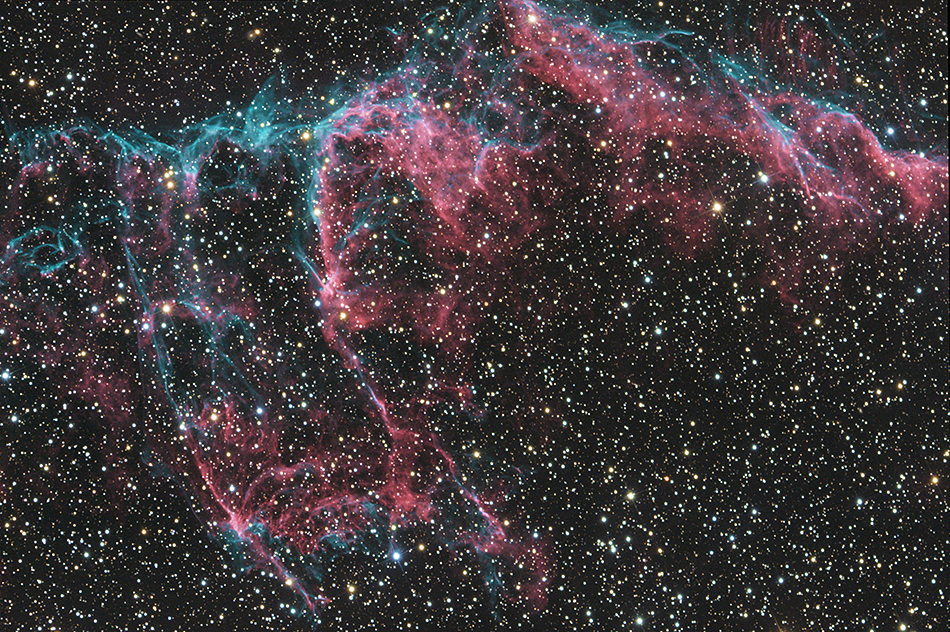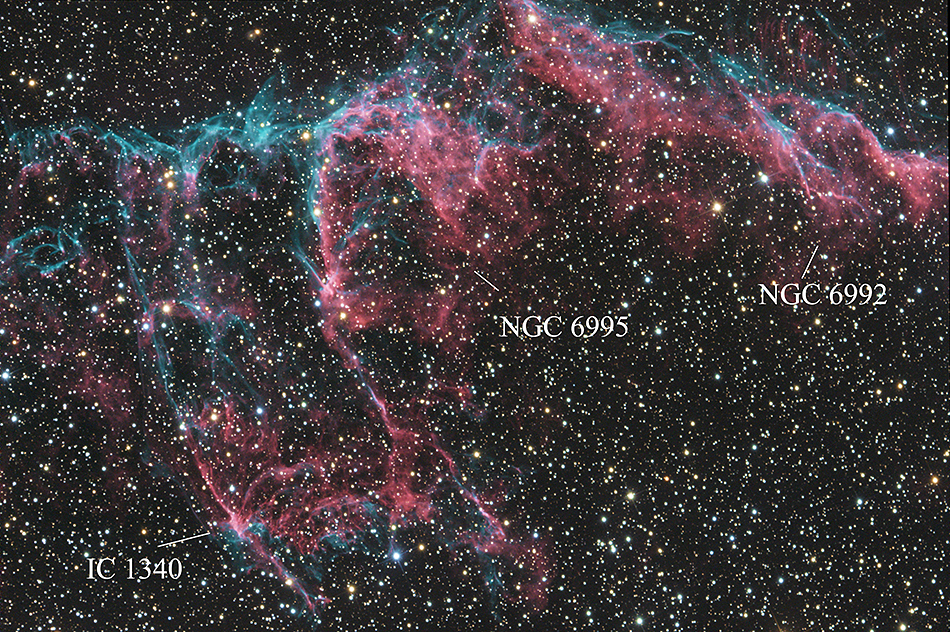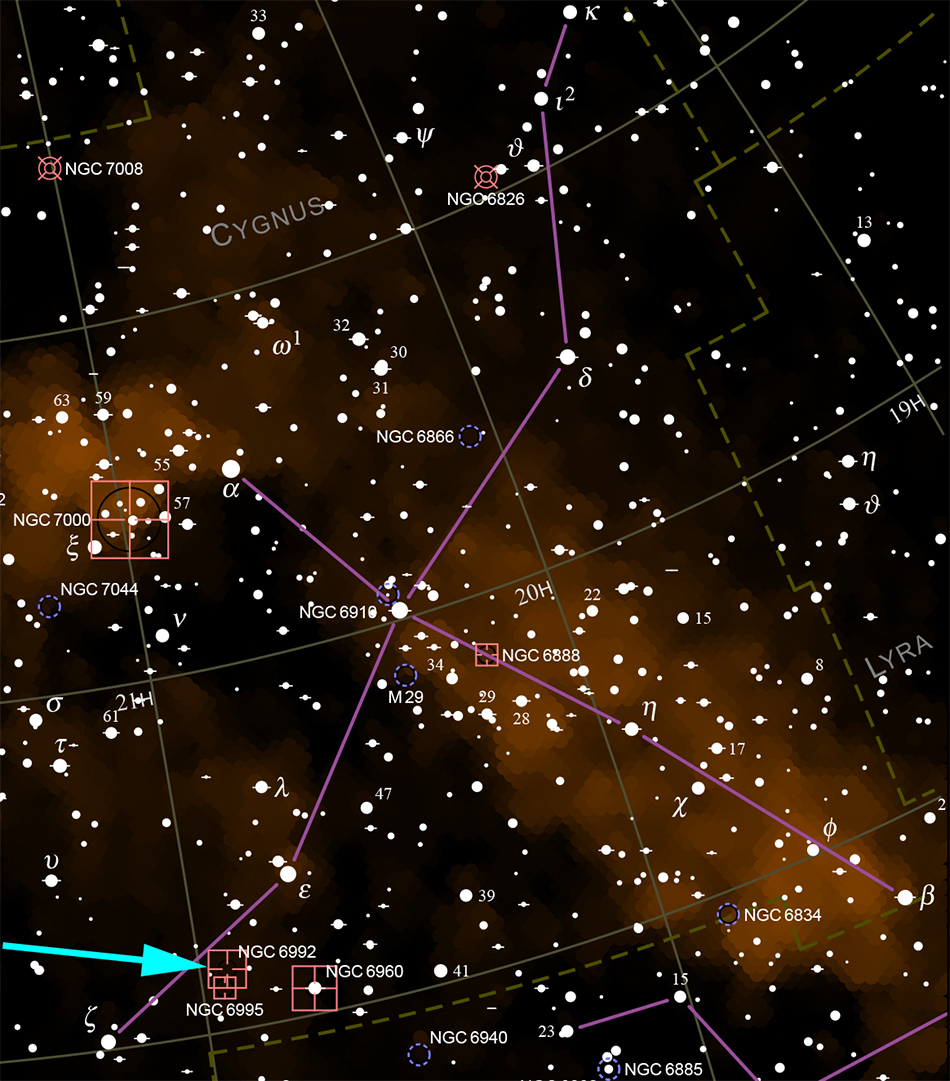

| Object name: | Constellation: | Coordinates: | Apparent size: | Visual brightness: |
|---|---|---|---|---|
| NGC 6992 | Cygnus | 20h56m / +31°45' | 60' x 8' | - |
| Object name: | Constellation: | Coordinates: | Apparent size: | Visual brightness: |
|---|---|---|---|---|
| NGC 6995 | Cygnus | 20h57m / +31°14' | 12' x 12' | - |
| Object name: | Constellation: | Coordinates: | Apparent size: | Visual brightness: |
|---|---|---|---|---|
| IC 1340 | Cygnus | 20h56m / +31°03' | 25' x 20' | - |

The supernova remnant NGC 6992, NGC 6995 & IC 1340 (Eastern Veil, Network Nebula, Lacework Nebula, Caldwell 33) in the constellation Cygnus. The Eastern Veil is a cloud of heated and ionized gas and dust from a star 20 times more massive than the Sun which exploded about 8,000 years ago. It is roughly 2,100 to 2,400 light-years from Earth. NGC 6992 was discovered by German-born British astronomer and composer William Herschel in 1783 /1784, NGC 6995 was discovered by his son John Frederick William Herschel in 1825 and IC 1340 by American astronomer Truman Henry Safford in 1866 (source: Wikipedia).
Twenty-four 3-minute exposures (72 minutes total exposure) at gain 100 taken on July 11 / 12, 2021, were added for this shot with the Astro Pixel Processor (APP) software and the final image processing was done in Photoshop. Darks, flats and darkflats were used.
Equipment: Cooled ASI 2600MC Pro camera, TeleVue Paracorr Type II coma corrector, 16" f/4.5 "Ninja" dobsonian telescope riding on a dual-axis Tom Osypowski equatorial platform, Lacerta MGEN autoguider, Lacerta off axis system.
